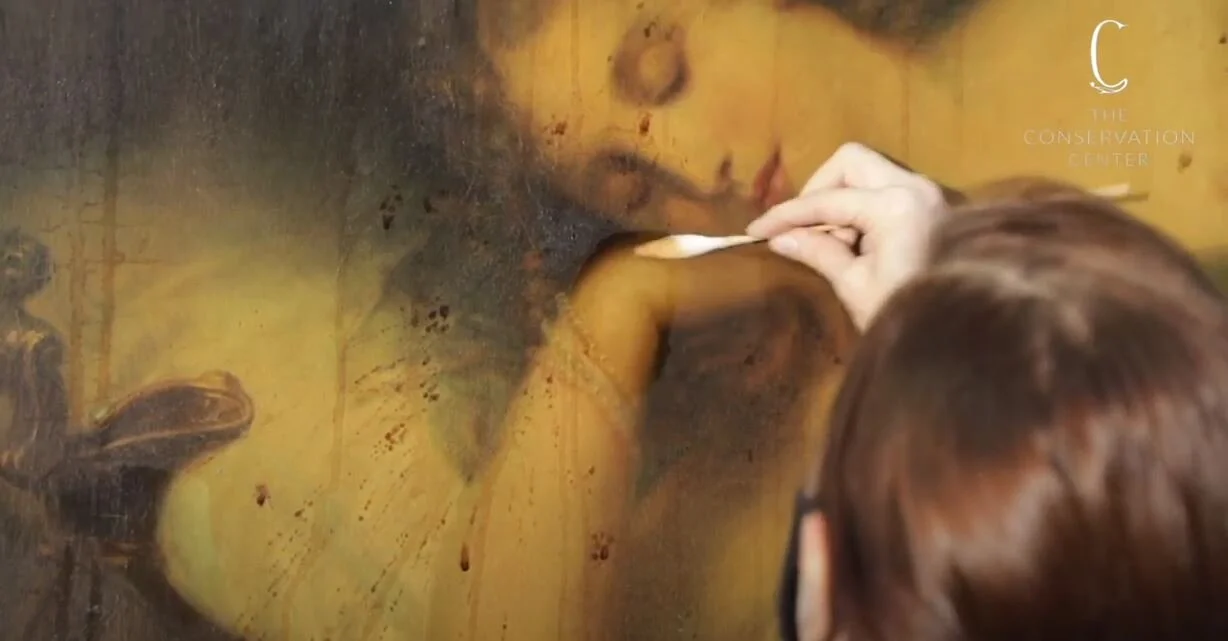Well before Matt Groening’s Marge Simpson character became pop icon, artist Ed Paschke (1939–2004) created his own version of a Yellow Lady in 1969. In the same way that the bizarre appearances and situations as depicted in “The Simpsons” comment on pop culture, Paschke’s manipulations of mass media aim to do the same. The technicolor tones and flat background aim to dissociate the woman from her body and her surroundings; the addition of the admiring man takes on the role of the consumer and the viewer, aiming to make the voyeur uncomfortable. While only minor conservation was needed for this vibrant painting, the private collector knew very little about its history, causing us to reach out to the Ed Paschke Foundation and even the artist’s daughter, Sharon Paschke. Neither was familiar of the piece’s existence, and Sharon, especially, was excited to see a new example of her father’s early work. In order to discover more about this very special Yellow Lady, we studied the canvas under ultraviolet light and found some surprising details. With these new findings, The Conservation Center was able to shed new light on this painting for its owner as well as the Paschke family.




















